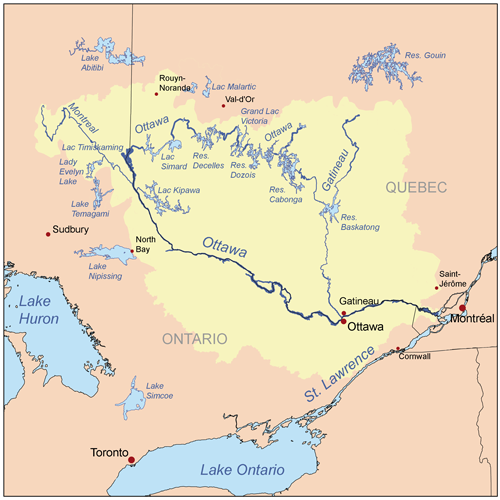 |
| Open Doors: visitors explore the gallery |
The
Canadian Newsblog has also published a post about this. That journalist must have been one of the numerous visitors to the Water Purification Plant last weekend, when it opened its doors to the public. We cycled there along the riverside bike trails last Sunday, light rain notwithstanding. Geese and goslings got in our way.
 |
| Keefer |
I noticed that the marble staircase of the Lemieux Island Plant building (opened in 1928) closely resembles the stairs in the Chateau Laurier; it was made of the same stone in the days when important buildings had to be elegant. Water engineers (Thomas Keefer was the first in Ottawa) were treated with great respect and their headquarters were correspondingly splendid. In the old days, formal banquets used to be held in the gallery on the top floor of the water treatment plant. It was an echoey space, so the noise of many conversations at these events must have been a problem.
A purification plant has been operating here since 1874. Steam pumps processing 10 million gallons of river water per day by means of reciprocating pumps and waterwheels, which were replaced (at the time of the 2nd World War) by centrifugal pumps and turbines.
 |
| Simplified map of the watershed (Wikipedia) |
Our group was led on a tour of the premises by Paul, the manager. To start with he showed us a wonderful map of the Ottawa River's watershed area. The water that flows through Ottawa comes from a 146,000 square kilometre area of land (drainage basin), of which the Algonquin Park, for example, is only a small part. There are few industries or conurbations in this area, so we are lucky to have water that's already relatively clean, although it's slightly coloured by the tannins from the leaves and grasses it touches.
In order to clarify and cleanse the raw river water, it goes through a series of processes including the addition of sulphuric acid to remove the aluminium in it.
 |
| Scum from "raw" water |
The first stage is known as "coagulation / flocculation"––a stirring of the water in 8.5m deep tanks, which we saw, scum floating on the top. This removes the sediments in the water and 90% of its pathogens. The rest are filtered out through a deep layer of anthracite and (underneath it) quartz sand, a process lasting two or three days, after which the water is clear. The anthracite filter is effective for many decades, but has to be back-flushed regularly. Finally, the clarified water is disinfected with chlorine in order to remove viruses. Caustic soda (sodium hydroxide) is added at this stage to raise the PH level and prevent corrosion of the city's pipes. Another disinfectant, ammonia, goes into the water and a little fluoride is added for the sake of our teeth.

As an inducement to drinking tap water, free water containers were distributed and we were encouraged to take part in a blind water tasting––three kinds of drinking water being offered: distilled, bottled (filtered) and tap water. I could detect the different taste of the distilled water but there was little to distinguish the other two. Point made.





No comments:
Post a Comment